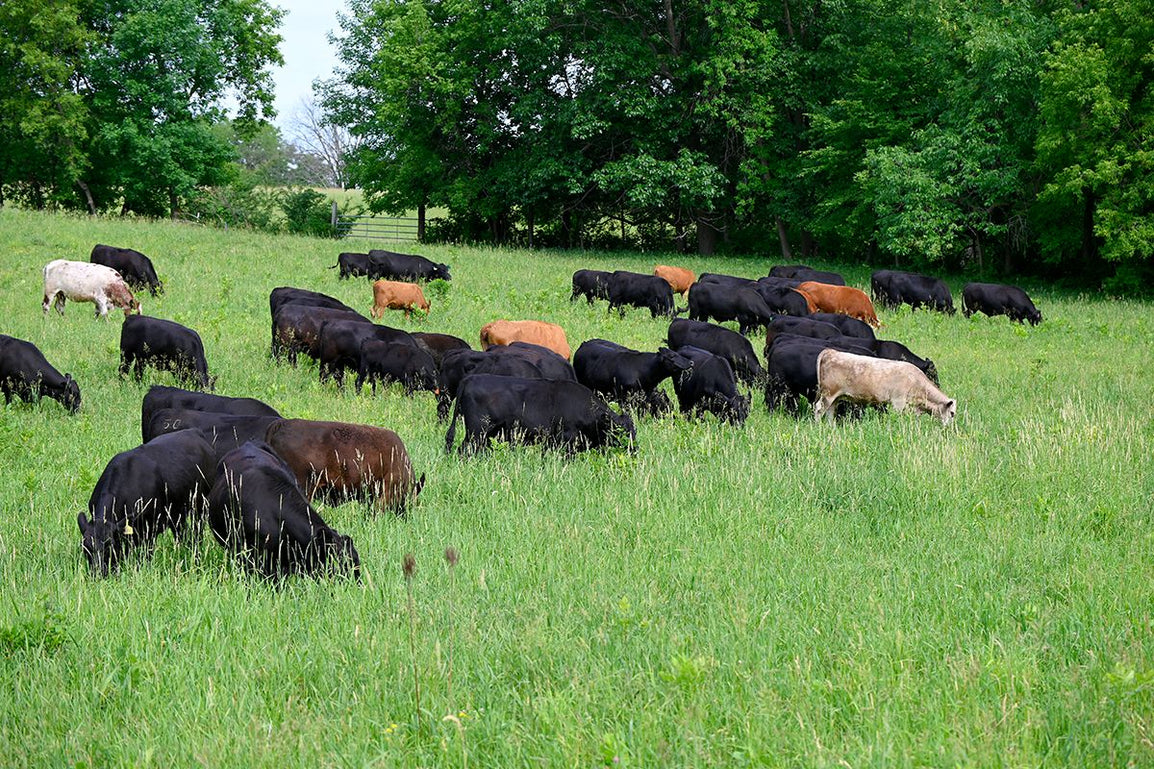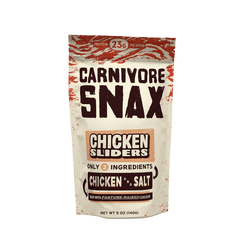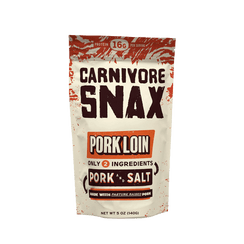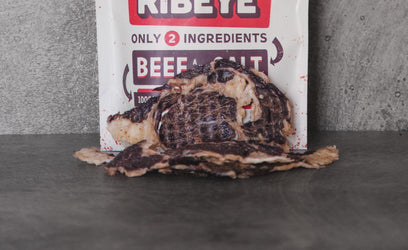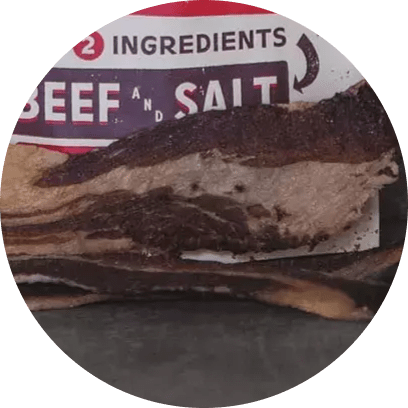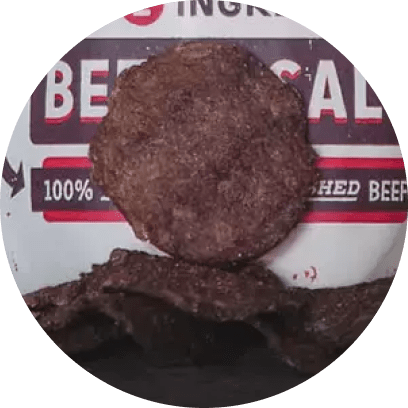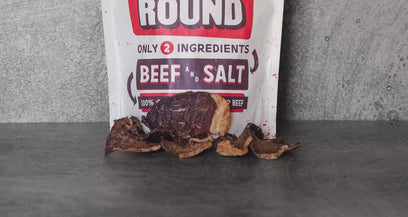THE CARNIVORE DIET BENEFITS




You know that the implications of regenerative agriculture are impressive - which is why more and more farmers are adopting this method. But how does regenerative agriculture work, exactly? You’ll find out in this complete guide as we fully explain all the techniques that go into regenerative farming.
From cover cropping to reduced tillage, rotational grazing, and much, much more - a lot of different tactics are utilized on regenerative farms. Each has its place in creating a sustainable and resilient food supply system. Before we explain how these all work in synergy, let’s define regenerative ag for those who are new here.
Regenerative Agriculture Defined
We suggest you start with our beginner's guide: what is regenerative agriculture? This introductory resource will get you up to speed. But essentially, regenerative agriculture is a farming and land management approach that focuses on rebuilding soil health, increasing biodiversity, and improving ecosystem services.
This approach to farming emphasizes the use of techniques such as cover cropping, crop rotation, and reduced tillage, with the goal of creating a self-sustaining, closed system where soil fertility is improved over time, rather than depleted.
Why is regenerative agriculture important, though? Simple. By improving the health of the soil and the surrounding ecosystem, regenerative agriculture aims to create more sustainable, efficient, resilient, and productive farms. Below, we’ll take a deeper look at how these various systems work together to achieve these outcomes.
How Does Regenerative Agriculture Work to Create Sustainable, Resilient Food Systems?
Now, how does regenerative agriculture work? There are quite a few unique techniques farmers will employ to keep their regenerative farms thriving. You may not see all of these used on a single farm, but you can bet that any regenerative farm is incorporating at least a few. And all of them have their place in the world of regenerative agriculture in some way or another.
Let’s start with one of the very first techniques used in ancient regenerative agriculture: cover cropping.
Cover Cropping Adds Organic Matter to the Soil While Reducing Erosion
Cover cropping involves planting crops between cash crops (the crop that farmers specialize in) to protect soil from erosion, improve soil health, and increase biodiversity.
Cover crops are usually low-growing plants, such as clover, rye, or vetch, that are planted in the fall after the main cash crop has been harvested. They help to add organic matter to the soil, fix nitrogen, and reduce soil erosion.
In the spring, the cover crops are incorporated into the soil as a natural fertilizer, providing essential nutrients to the next cash crop. This practice helps eliminate the need for more aggressive soil preservation methods while also cutting back on the need for synthetic fertilizers.
Crop Rotation Promotes a Diverse, Healthy Ecosystem While Improving Soil Conditions
As the name suggests, this is the practice of rotating crops rather than planting the same crops in the same fields year after year. Why would a farmer do this, though? Simple -it helps to improve soil health by reducing pest and disease pressure and preventing soil-borne diseases from becoming prevalent. It “keeps the soil guessing” so to speak. And that’s not all it does.
Crop rotation also promotes a more diverse and healthy ecosystem by allowing different crops to bring different nutrients to the soil. For example, a farmer might rotate between a nitrogen-fixing crop, such as soybeans, and a heavy-feeding crop, such as corn, to ensure that the soil has a balanced supply of nutrients.
Reduced Tillage Keeps Soil Healthy & Intact While Eliminating the Need for Synthetic Inputs
Reduced tillage involves minimizing or eliminating tillage, such as plowing, to reduce soil disturbance and conserve soil structure and organic matter. Soil is plowed in commercial agriculture at the end of each harvest to make the next planting quick and easy. But this modern practice is problematic. By reducing tillage, the soil is left intact, and the natural structure and biology of the soil are both preserved.
This helps to promote soil health and reduce erosion while reducing the need for harmful synthetic inputs such as fertilizers and herbicides. For example, no-till farming involves planting crops directly into the previous year's residue, reducing the need for tillage and promoting a healthier soil ecosystem.
Composting Recycles Organic Materials Safely While Serving as a Healthy Fertilizer
All crops need a source of food - the same goes for livestock. And, as you may already know, there are many different ways to go about feeding both crops and livestock. While commercial ag utilizes cheap synthetic nutrients and fertilizers, regenerative farms rely upon the tried-and-true approach of composting.
This involves blending together organic inputs like food scraps, yard waste, livestock manure, and more - allowing them to steep for months or years in some cases. This creates a superfood that can then be used as fertilizer - eliminating the need for synthetic fertilizers. Additionally, composting helps to reduce waste by recycling organic materials back into the soil.
Intercropping Creates Synergy for More Productive Farming
Intercropping is the practice of planting multiple crops in close proximity to each other to increase biodiversity, improve soil health, and reduce pest and disease pressure. The first example of intercropping was the “three sisters” technique - where corn, squash, and beans were all planted in the same plot.
These crops interacted synergistically with each other - resulting in better conditions for all plants involved. Corn provides the structure for beans, which provides nitrogen in the soil for the corn and squash. Meanwhile, the squash creates a natural mulch along the soil which prevents pests while maintaining moisture levels. All three crops thrive together. And there are countless examples of intercropping in practice today.
Livestock Integration Offers Natural Fertilizer, Controls Pests, Enhances Ecosystem Biodiversity, & Keeps Things Humane
Last but not least, livestock integration involves incorporating livestock into the farming system to provide natural fertilizer, control pests, and promote biodiversity. By grazing animals in pastures, farmers can help to control weeds, reduce the need for synthetic fertilizers, and add essential nutrients to the soil.
Additionally, livestock can help to promote a more diverse and healthy ecosystem by providing habitats for beneficial insects and animals. For example, farmers might rotate their cattle through pastures, allowing the animals to graze on forage crops and add manure to the soil.
Now, the kicker here is that livestock integration doesn’t just contribute to healthier, more sustainable food supply systems. It’s also the most humane way to raise livestock - allowing them to live a life that closely replicates their natural environment. In regenerative farms that raise livestock, everything is done naturally without cutting corners - from raising the herd to cutting the meat.
The End Result: a Sustainable, Resilient, and Thriving Food Supply System
So, how does regenerative agriculture work to actually create favorable outcomes in the food supply chain? All of these techniques contribute to one common goal: a more sustainable, resilient, and thriving food supply system. One that is not dependent on harmful commercial agriculture techniques.
In one way or another, these tactics improve soil conditions, sequester carbon in the atmosphere, eliminate harmful additives to your food, and improve conditions for livestock and farmers themselves.
If the world adopts this approach to farming would lead to the preservation of our lands, superior food quality, increased food quantity, and greater diversity in the food supply chain - where anyone has the opportunity to start their own regenerative farm.
The question now is - how can you support regenerative agriculture yourself? What can you do today to make a difference in our food supply system? Knowledge is power. So, take the time to learn more about how regenerative agriculture works and what its implications are.
Then, become an advocate for this method of farming - teaching others what it involves and what its benefits are. You can make your voice heard by writing to your elected officials and expressing your frustration at the current state of our food supply system.
Or better yet, support the movement by spending your money wisely - with organizations and brands that endorse regenerative farming. That’s what we’ve done here at Carnivore Snax. We source our meat chips through elite farms that put these practices into action.
Wait - what are meat snacks? These are delicious “meat pastries” that literally melt in your mouth, giving way to tantalizing flavors that will blow your mind. They’re that good. The best part, though, is that when you shop with us, you’re supporting regenerative farms yourself. Who knew making an impact on the food industry could taste this good?!
And because our carnivore crisps only contain two ingredients (meat and salt), they’re the perfect carnivore diet snack. But really, whether you’re on the carnivore diet vs keto diet, the paleo diet, or simply want to learn how to eat a high-protein diet and make better nutritional choices - our carnivore crisps belong in your pantry.
Get yours today and you’ll quickly discover what the hype is all about after that very first bite.
Closing Thoughts on How Regenerative Agriculture Works
How does regenerative agriculture work?
In summary, this method of farming gets back to ancient techniques that preserve the land and improve the soil. The goal of this approach to farming is to create a closed-loop system that - in time - creates a more resilient, productive, and diverse food supply system. Some of the most common techniques used include cover cropping, intercropping, crop rotation, reduced tillage, composting, rotational crazing, and other livestock intervention tactics.
Now that you know how regenerative agriculture works - and why it’s important - what are you waiting for? Take a stance today by getting the best low carb snack the regenerative farming world has to offer.
Across our diverse range of meat chips, we seek to exceed your expectations - whether you go with our ribeye chips, steak chips, lamb chips, beef chips, brisket chips, chicken chips, or pork chips. Find your new favorite low-carb, protein-packed snack today!









